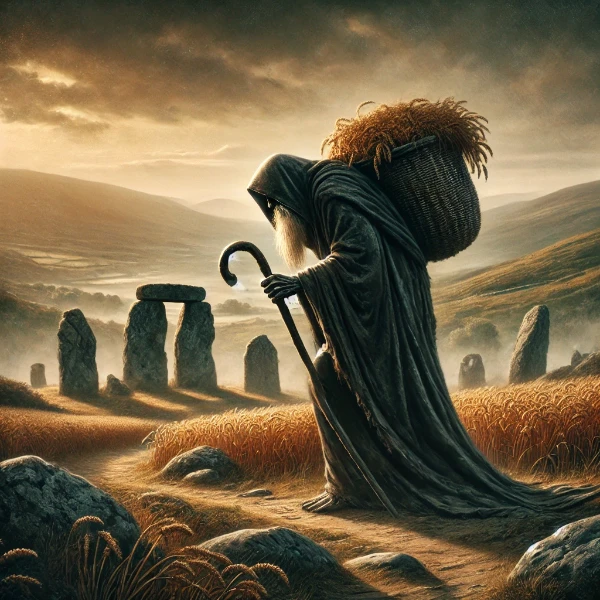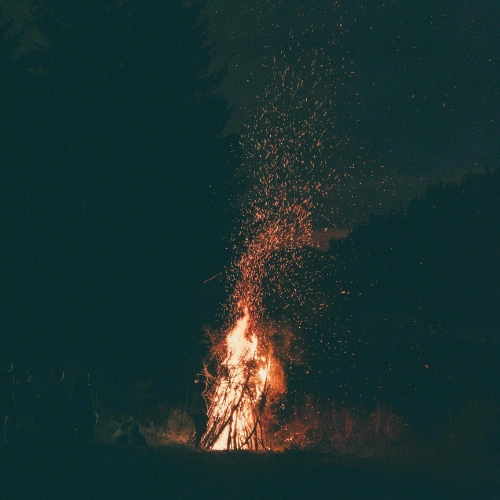Crom Dubh – The Dark Crooked One of Irish Mythology

Irish mythology is filled with intriguing characters, mysterious figures, and stories that bridge the realms of mortals and gods. One such enigmatic figure is Crom Dubh, whose name translates to “Dark Crooked One” or “Black Bowed One.” Crom Dubh is a fascinating symbol of Ireland’s pagan past, embodying themes of harvest, life cycles, and the transition from paganism to Christianity. His legacy reminds us of the importance of preserving Ireland’s rich cultural heritage through the stories that have shaped its identity.
Who is Crom Dubh?
Crom Dubh is a shadowy Irish mythology figure steeped in mystery and complexity. His name suggests darkness and a crooked or bent nature, hinting at both his physical form and spiritual symbolism. Often linked to fertility and the cycles of life and death, Crom Dubh was likely a deity or legendary figure associated with the harvest and agricultural abundance. He represents the connection between humanity and the land, reflecting the importance of sustenance in ancient Ireland’s daily life.
Crom Dubh and the Harvest

As a figure tied to the harvest, Crom Dubh played a central role in ensuring the land’s bounty. His influence is often associated with Lughnasa, the festival marking the first fruits of the harvest. Farmers and communities would honour him through rituals to guarantee a successful season. The imagery of Crom Dubh bending under the weight of a harvest bundle or overseeing fields ready for reaping speaks to his deep connection to agriculture and the sustenance it provided.
The Legend of Crom Cruach
Crom Dubh is sometimes conflated with Crom Cruach, a pre-Christian deity mentioned in early Irish texts. Crom Cruach was said to demand sacrifices, including human ones, in exchange for agricultural fertility. According to legend, Saint Patrick confronted and destroyed Crom Cruach’s idol at Magh Slécht (“The Plain of Prostration”), marking the triumph of Christianity over pagan worship. This story illustrates the tension between Ireland’s ancient traditions and the arrival of Christianity, with Crom Dubh symbolizing the old ways that were replaced.
Crom Dubh’s Day
Crom Dubh’s influence persists in modern Irish traditions despite his association with paganism. Crom Dubh’s Day, celebrated in late July or early August, aligns with the harvest season. Rituals during this time often involve symbolic activities like gathering crops and sharing food, echoing ancient customs. This celebration underscores the enduring significance of Crom Dubh’s role in Irish agricultural heritage.
Folklore and Popular Stories
In folklore, Crom Dubh is sometimes depicted as a giant, a greedy landlord, or a hoarder of wealth. These stories often portray him as a dark and menacing figure who a saint or hero eventually defeats. For instance, tales of Crom Dubh’s encounters with Christian figures reflect the shift from paganism to Christianity in Ireland. Such narratives often carry moral lessons about justice, balance, and the triumph of light over darkness.
Legacy of Crom Dubh
Crom Dubh’s legacy symbolizes Ireland’s deep connection to nature and life cycles. He represents a bridge between Ireland’s pagan past and its Christian future, embodying the struggles and transformations of a culture in transition. His role in myth and tradition reminds us of the importance of agricultural life and the sacredness of the land in Irish heritage.
Why Crom Dubh Matters Today
Understanding figures like Crom Dubh allows us to delve into Ireland’s rich mythological tapestry. These stories not only preserve Ireland’s pagan past but also shed light on its cultural evolution. Crom Dubh reminds us of the enduring power of myth to connect us to the land, history, and shared human experiences. By exploring and sharing these tales, we honour the legacy of those who shaped Ireland’s identity.
Conclusion
Crom Dubh is a compelling figure in Irish mythology. He symbolizes harvests, cycles of life, and the intersection of pagan and Christian traditions. His story highlights the importance of mythology in understanding Ireland’s cultural roots. By sharing and preserving these tales, we keep the spirit of Ireland’s past alive for future generations to explore and cherish.
